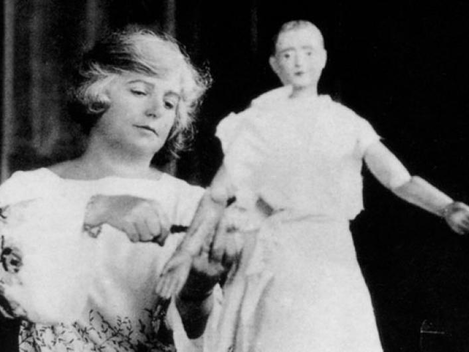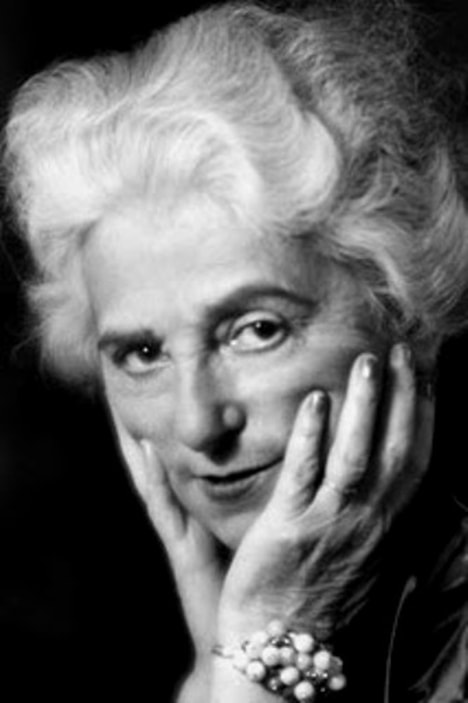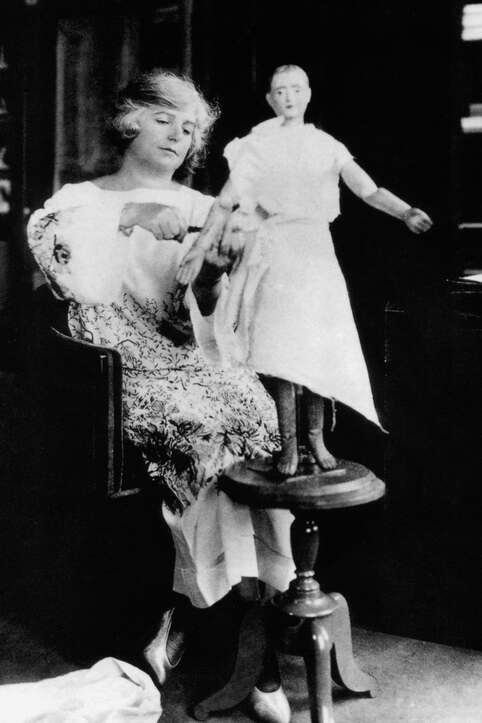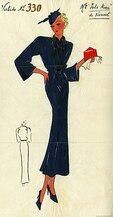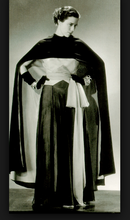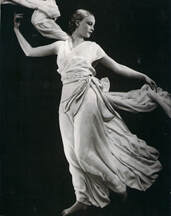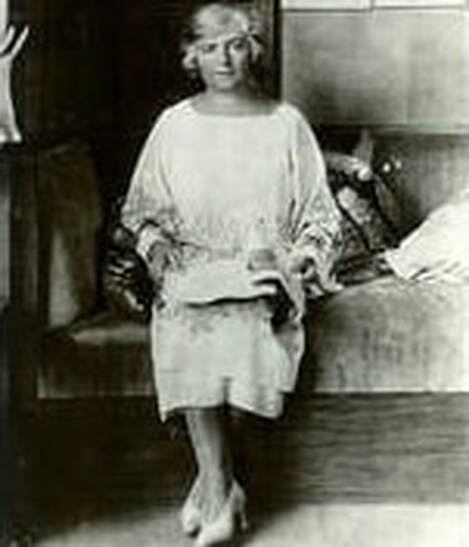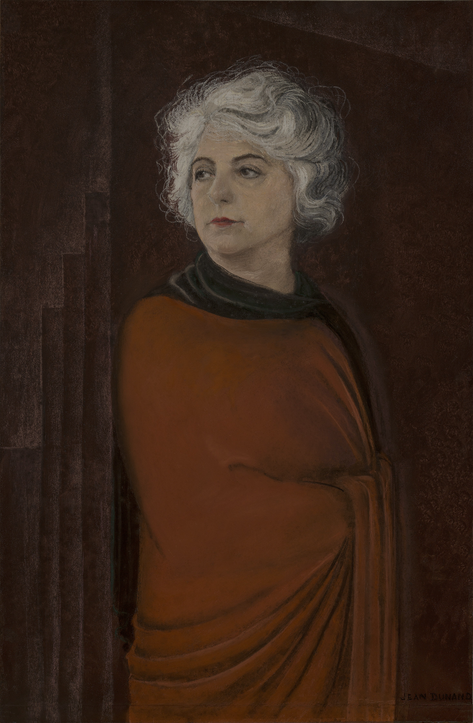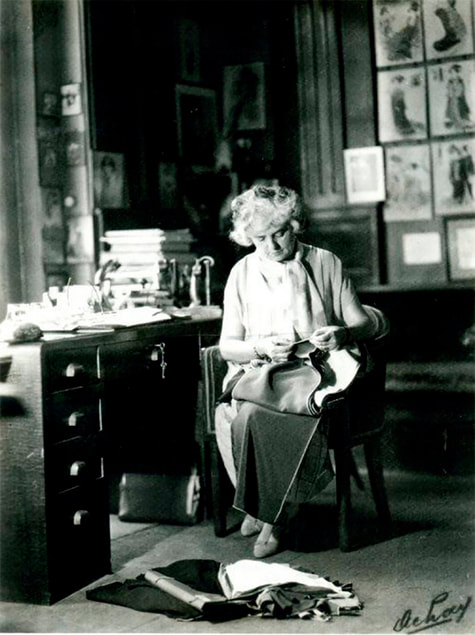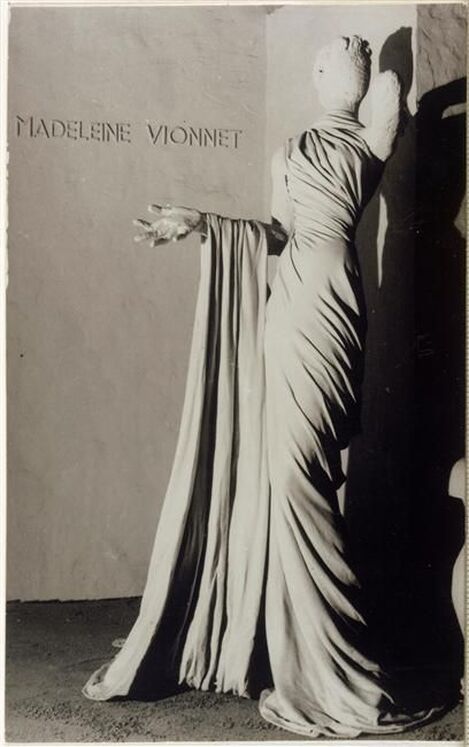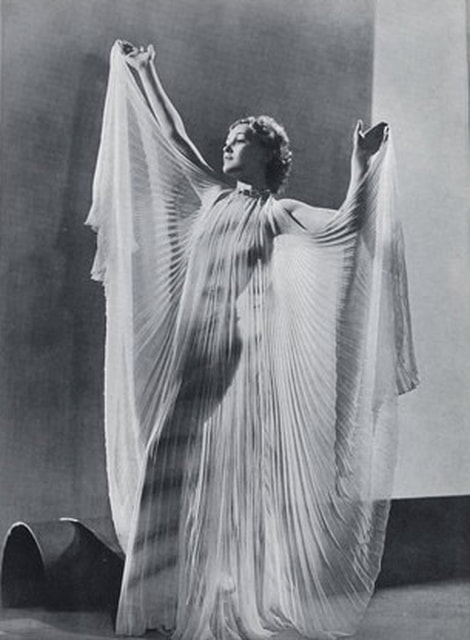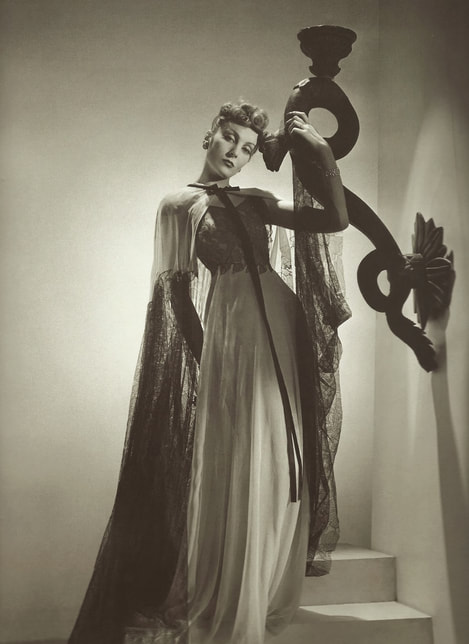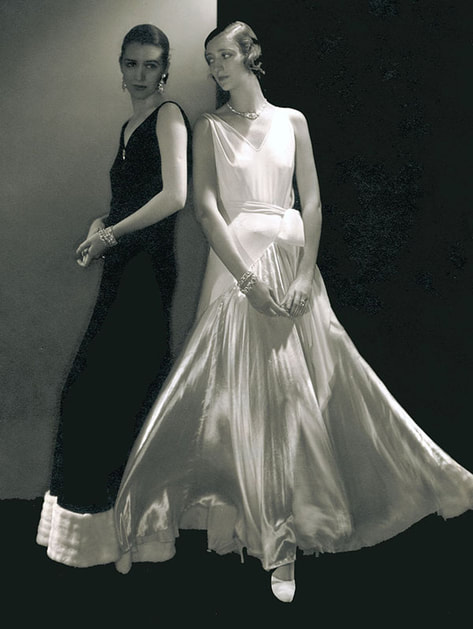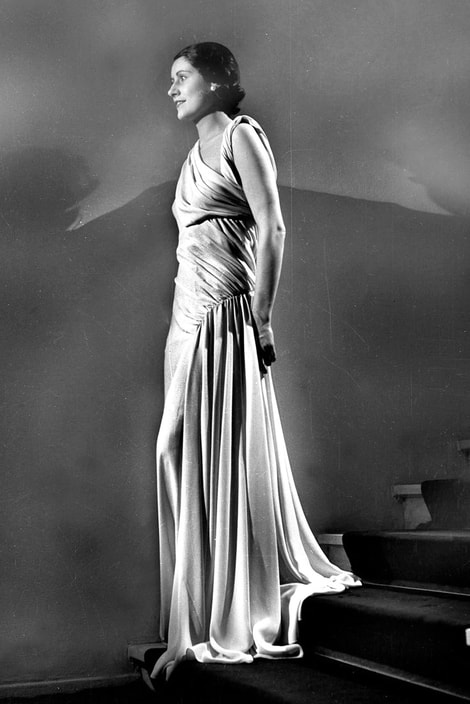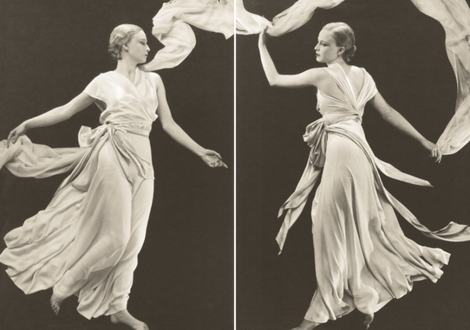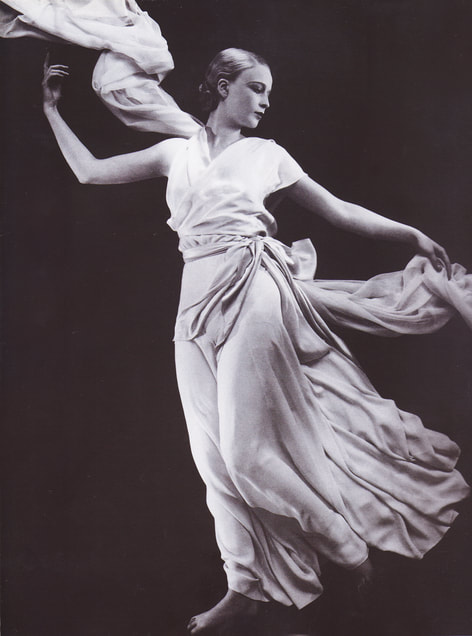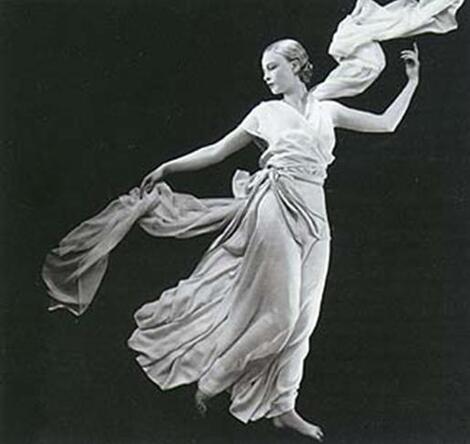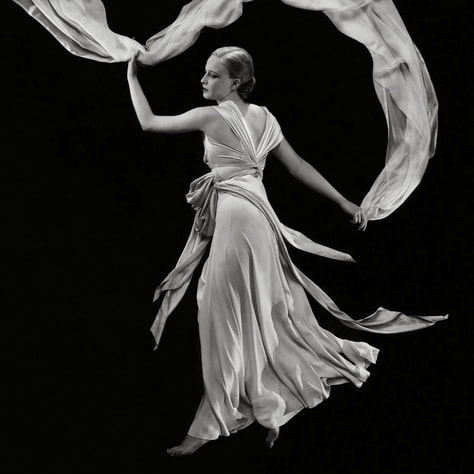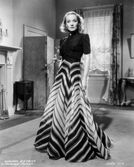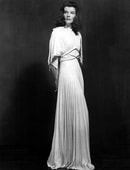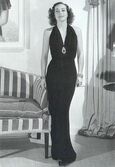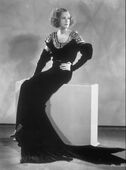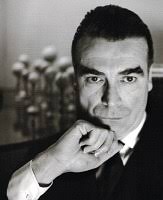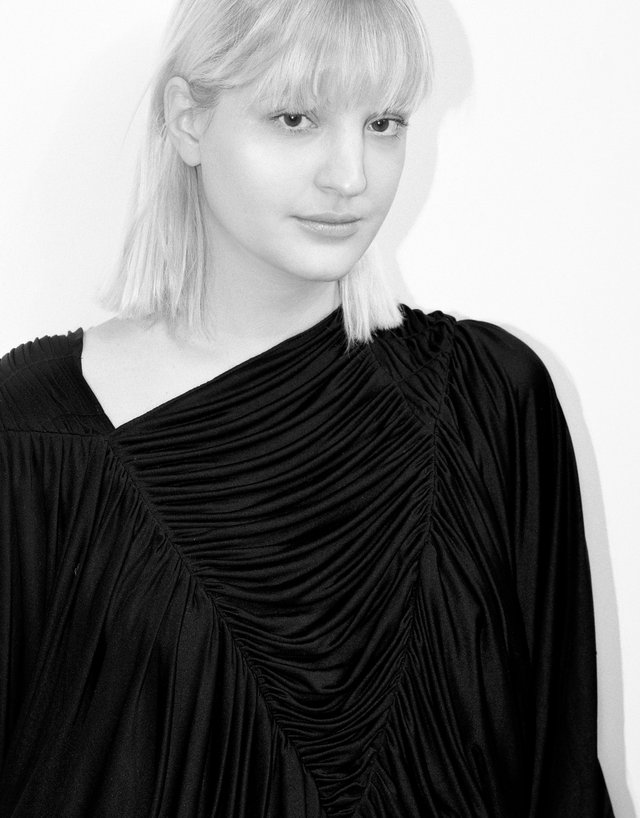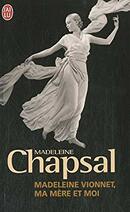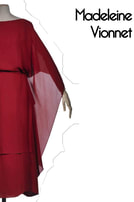If a woman smiles, her dress must also smile.
-- Madeleine Vionnet
Madeleine Vionnet
Madame Vionnet was a French couturière with vision and smille. Inspired by Greek art of Hellenistic period and modern dance of Isadora Duncan, Madeleine Vionnet was sensitive both to the aestheticis of clothes as well as the comfort of the women who wear them, particularly when they move about in them. And with her master skill of drapying and bias cut, she had created some of the most elegant and ever lasting dresses in the fashion history.
1871 birth
On 22 June, 1871. madeleine vionnet was born in Chilleurs-aux-Bois, Loire Valley France.
1888-1900: apprentice and marriage
In 1888, when she was 12, Madeleine started her aprenticeship in a neighbouring couture house, and entered the atelier the following year learning all the couture technique.
In 1890. she moved to Paris and became once again the apprentice of another couture house, Maison Vincent on Rue de la Paix.
It was in Paris she met her first husband Émile Depoutot and they got married in 1894, but it last only two years, because the daughter madeleine gave birth to was dead, and the couple could not bear the loss.
Madeleine Vionnet left Paris and France, went to Manchester to work as a seamstress, than to London to work for a couture house named Kate Reily as a fitter. And it was in London, Madeleine learned the all the Savile Road Tailors` techniques, as well as the tricks of copying an item well enough so nobody would really notice it.
In 1890. she moved to Paris and became once again the apprentice of another couture house, Maison Vincent on Rue de la Paix.
It was in Paris she met her first husband Émile Depoutot and they got married in 1894, but it last only two years, because the daughter madeleine gave birth to was dead, and the couple could not bear the loss.
Madeleine Vionnet left Paris and France, went to Manchester to work as a seamstress, than to London to work for a couture house named Kate Reily as a fitter. And it was in London, Madeleine learned the all the Savile Road Tailors` techniques, as well as the tricks of copying an item well enough so nobody would really notice it.
1900-1911: art of draping
In 1900, inspired by Isadora Duncan`s dance and her Greek style dancing costume, Madeleine Vionnet started to explore the art of draping, and mastered it so well that the second year she was engaged to work as toile maker in Maison Callot Sœurs, one of the most famous couture houses in Paris at the time.
In 1907, she went to work for Jacques Doucet, another couturier, and it was in Maison Doucet that Madeleine completely got rid of corsets in all of her creations, which was a great revolution at that time, and which was later attributed to Paul Poiret.
In 1907, she went to work for Jacques Doucet, another couturier, and it was in Maison Doucet that Madeleine completely got rid of corsets in all of her creations, which was a great revolution at that time, and which was later attributed to Paul Poiret.
1912-1919: Maison Vionnet and World War
Due to great success of her work in Maison Doucet, Madeleine Vionnet decided to open her own salon. In 1912, she established herself at No. 222, Rue de Rivoli, but she had to close the door in just 2 years due to the World War I, but she continued to work and created some of her most audacious dresses during that period.
Grâce aux sœurs Callot, j'ai pu faire des Rolls-Royce. Sans elles j'aurais fait des Ford."
(Thanks to seurs Callot, I have been able to make Rolls-Royce, without her I would have made Ford.
- Madeleine Vionnet
1920-1940:
A few years after World War I, Madeleine Vionnet reopened her couture house in 1923 on Avenue Montaigne, and two years later, her clothes were sold in New York.
For more than 10 years, through all the 30s, Madeleine Vionnet's simple, elegant and femine style became the standard costumes of golden Hollywood, and she has dressed all the major stars like Greta Garbo, Ketharine Hepburn, Joan Crawford, etc.
In 1939, when the Second World II broke out, Madeleine Vionnet had to close her shop again, and this time, she did not open it and in 1940 she retired from haute couture. In the three decades, Madeleine created more than 12,000 gowns.
For more than 10 years, through all the 30s, Madeleine Vionnet's simple, elegant and femine style became the standard costumes of golden Hollywood, and she has dressed all the major stars like Greta Garbo, Ketharine Hepburn, Joan Crawford, etc.
In 1939, when the Second World II broke out, Madeleine Vionnet had to close her shop again, and this time, she did not open it and in 1940 she retired from haute couture. In the three decades, Madeleine created more than 12,000 gowns.
1975 Death
Madeleine Vionnet is perhaps the first couturier who was aware of protecting her own creations by inventing a ingenious system:
« Non seulement, j'appose sur chaque modèle sorti de chez moi ma griffe et un numéro de série mais aussi mon empreinte digitale. Je donne aussi le nom des personnes que j'autorise officiellement à copier mes œuvres à plusieurs exemplaires »
(Not only do I put my label and the serial number of the model on each item leaving my couture house, but also my digital fingerprint. I also write the names of the people authorised to copy my clothes.)
She was also very diligent in archiving her creations, with each of the model being photoed front, back and profile. Thanks to that, we are able to have a better look at how this extraordinary couturière had mastered the art of creating timeless beauty and elegance.
« Non seulement, j'appose sur chaque modèle sorti de chez moi ma griffe et un numéro de série mais aussi mon empreinte digitale. Je donne aussi le nom des personnes que j'autorise officiellement à copier mes œuvres à plusieurs exemplaires »
(Not only do I put my label and the serial number of the model on each item leaving my couture house, but also my digital fingerprint. I also write the names of the people authorised to copy my clothes.)
She was also very diligent in archiving her creations, with each of the model being photoed front, back and profile. Thanks to that, we are able to have a better look at how this extraordinary couturière had mastered the art of creating timeless beauty and elegance.
On 2 March 1975, Madeleine Vionnet was dead in Paris, and she was interned in La Chassagne, the birth place of her father.
« Ce furent Madeleine Vionnet et Jeanne Lanvin qui transformèrent la profession de couturier en bâtissant de leurs propres mains et de leurs ciseaux les modèles de leurs collections. La robe devint alors un tout ; jupe et corsage obéirent au même principe de coupe. Dans ce domaine, personne n’est jamais aussi loin que Madeleine Vionnet. Elle avait le génie de l’emploi du tissu et inventa la coupe en biais qui devait mouler souplement les femmes d’entre les deux guerres. Désormais les robes purent se passer des garnitures 1900 et des motifs décoratifs de Poiret. La coupe seule importait ; le reste devenait superflu. Ainsi s’ouvrit le règne des grandes.
(“It were Madeleine Vionnet with Jeanne Lanvin who transformed the profession of couturier who constructed the models of their collection by their own hands and scissors. Thus the dress became a whole, th skirt and corsage followed the same principle as the body. In this area, nobody has gone so far as Madeleine Vionnet.
She had the genius of manipulating fabric and invented the bias cut that moulds smoothly women’s bodies between the two wars.
Since then the dresses can forget about the garnish of the 1900 and the decorative motifs of Poiret. Only the cut mattered, all rest became superfluous. Thus began the reign of the great couturieres. ”
-Christian Dior
Colors:
Fabrics:
Silk, chiffon, velor, mouslin, tulle, Morocan crepe, crepe de chine, satin, gabardine.
Silhouette:
Inspired by Greek art, in particular Greek sculpture, Madeleine Vionnet dedicated her life in creating and improving the column silouettes evoking grace, beauty and simplicity, with her masterful skill in bias cut and draping.
- Dresses
Websites:
Books:
Articles:
English:
French:
Italian:
Spanish:
Videos
